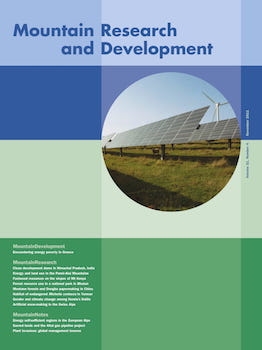China's rapid economic development is influencing cultural practices and natural resource management in indigenous mountain communities throughout the country. Numerous studies have documented loss and change of cultural practices and environmental degradation in indigenous communities with the expansion of roads, markets, tourism, and other infrastructure development. The present study focuses on papermaking, a socioecological practice that began in China, as a case study to examine the influence of development on cultural practices and natural resource management. The Naxi are an indigenous people who primarily inhabit the mountains of the eastern Himalaya in China's northwest Yunnan province. The Naxi people are unique in that they have the last remaining pictographic writing system in the world. The Naxi pictographic script is customarily learned and mastered by shaman priests known as Dongba (Dto'mba) who transmit their knowledge to their sons. Approximately 300,000 Naxi live in this area. The pictographic system is transmitted on paper sourced from montane forest resources, primarily Wisktroemia delavayi. This cultural tradition almost disappeared during the Cultural Revolution in China during the 1960s and 1970s but has recently seen a revival. Research involved both ethnographic interviews and ecological sampling. Semistructured interviews were conducted with 100 informants between 2002–2011 to understand the management and use of W. delavayi for Dongba papermaking and the impact of market integration on papermaking. Sample plots were surveyed for floristic composition and structure in the 3 vegetation types where W. delavayi grows. Density, height, diameter, and number of branches of W. delavayi plants were recorded within each plot. Ecological importance values were calculated based on relative density, relative dominance, and relative frequency to determine the habitat where W. delavayi demonstrates the greatest growth. Additional plots were surveyed to understand the regeneration of W. delavayi after the local harvest cycle.
How to translate text using browser tools
1 November 2011
The Role of Montane Forests for Indigenous Dongba Papermaking in the Naxi Highlands of Northwest Yunnan, China
Lixin Yang,
John Richard Stepp,
Selena Ahmed,
Shengji Pei,
Dayuan Xue





